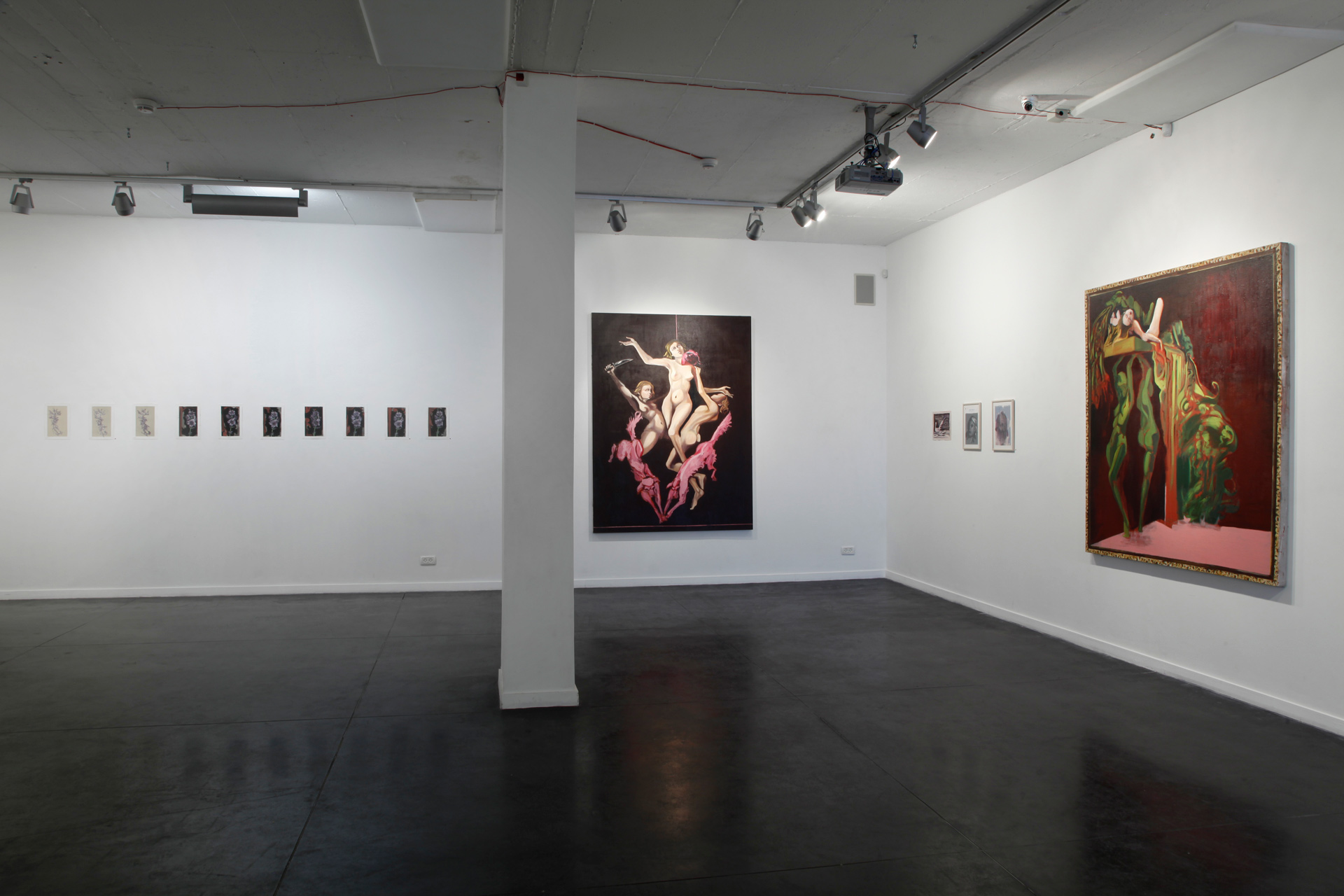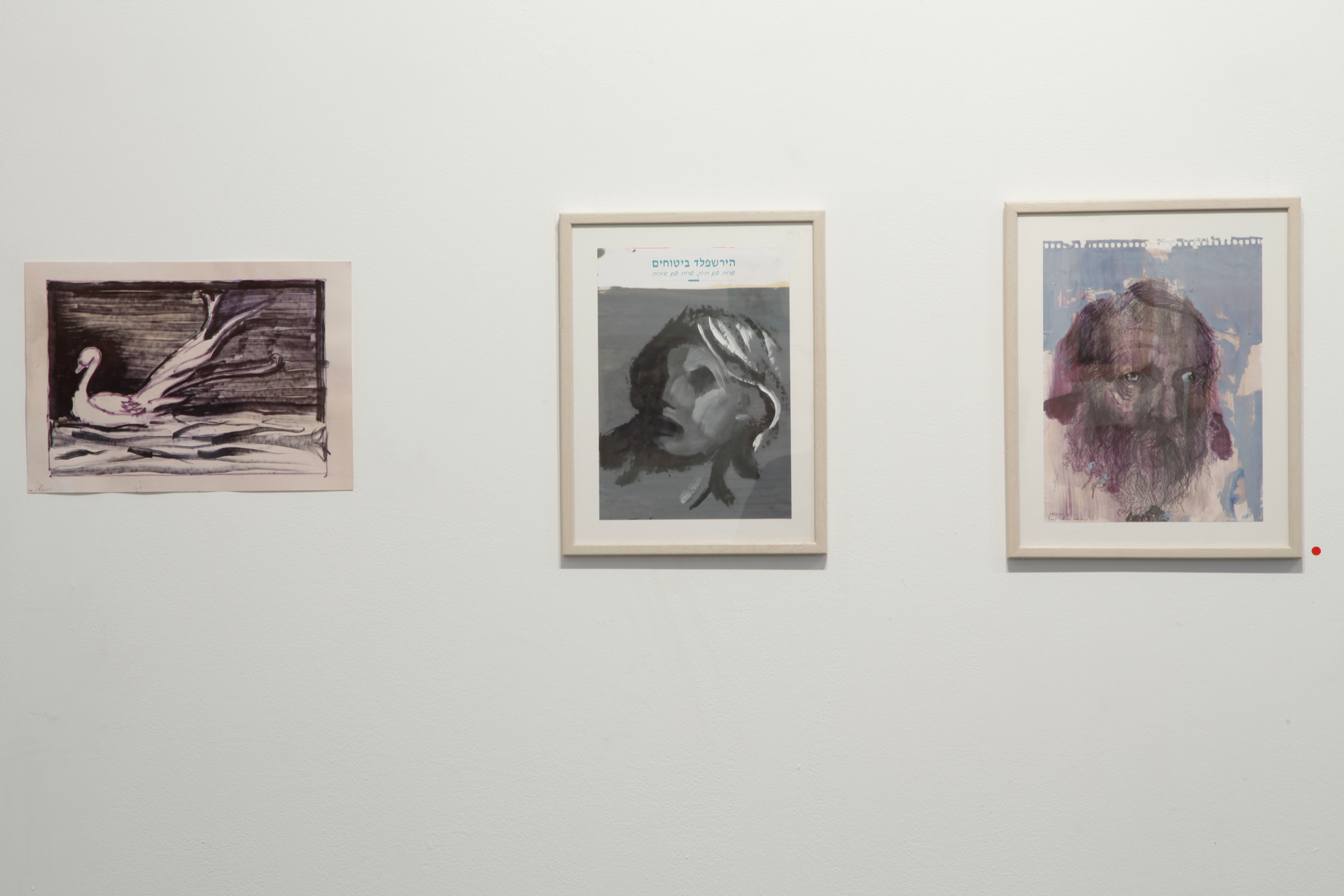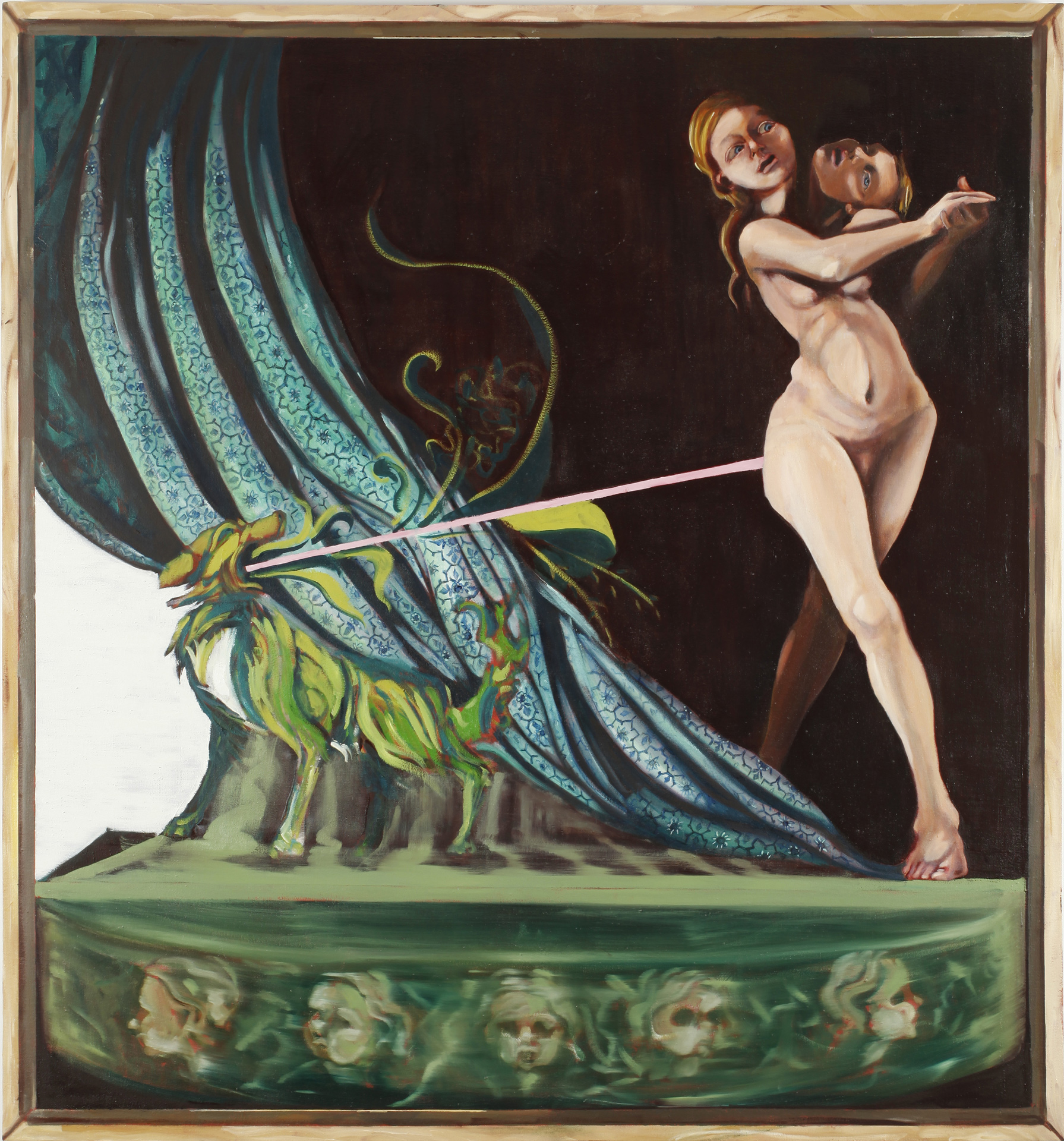The Tragedy
Solo show at Raw Art Gallery 2012,
curated by Nogah Davidson
This exhibition was named after a book by Pini Ifergan called “The Tragedy in Ethical Life” about the German philosopher Hegel. It includes imagery from the mythology of Siegfried, who slaughtered a dragon and bathed in his blood in order to become immortal, but missed one spot; Pasiphae, wife of King Minos of Crete, whom Poseidon cursed with an overpowering desire to mate with a bull;
and the Biblical Jezebel, Ahab's wife, who spread Paganism in Israel throughout her reign. Hirschfeld is interested in the dialectic relationship between art and mythology, and uses these narratives to explore the history of art, the significance of its creation, and the functions it takes on.
Jonathan Hirschfeld's "The Tragedy in Ethical Life"
Nogah Davidson
Seemingly, Jonathan Hirschfeld should have been an abstract painter. Given that his works deal with his inability to depict reality. He has taken on an anachronistic European image base, as an acknowledgment to his incapability to truthfully and directly address the Israeli reality in the twenty first century. He paints fictitious frames and creates purposely distorted tromp l'oeil illusions, as a disclosure to the artists' manipulative imitations of reality. Hence it may be said that Hirschfeld uses a negative course of representation to describe the limits of human ability, through symbols of emptiness, abjection and failure.
As an example, we can examine the role of Siegfried, the hero of German Mythology that has appeared in his works for several years. Furthermore, Hirschfeld named his 2008 solo exhibition "Bloodstain", this emphasizes the significance of the figure in his work. Siegfried slaughtered a dragon and bathed in his blood in order to become immortal. While doing so, a leaf fell on his bare back, leaving an empty spot which the blood didn't cover. This resulted in Siegfried's death when he was later stabbed in that very same spot. If so, Hirschfeld chooses to focus on the weakness of the heroic character, represented by an absent graphical mark. The vacant spot on Siegfried's back is what reminds him that he is no more than a mere mortal that cannot conquer nature.
Another work describes Pasiphae, wife of King Minos of Crete, whom Poseidon cursed with an overpowering desire to mate with a bull. This desire led her to ask the artificer Daedalus to create for her a wooden cow, within which she was able to satisfy her longing. If Siegfried's story describes the human aspiration to become immortal and reach the sublime; Pasiphae marks the other side of the spectrum, as the immortal goddess longs for an animal and degrades itself to the rank of a sub - human. However, like Siegrfied, Pasiphae desires for the absolute: no longer satisfied with her husband's pale willy, she needs the infinite mighty phallus of the divine bull – her passion is a desire to unite with the infinite.
One of the main characters in the exhibition is the Biblical Jezebel, Ahab's wife, who spread Paganism in Israel throughout her reign. Upon Ahab's death, Jezebel was sentenced to death by defenestration, her corpse left to be eaten by dogs. Her heroic portrayal in the exhibition is opposed to her traditional representation throughout Western Culture, as a symbol of treachery, vice and of destructive female manipulation.
Hirschfeld's interpretation diverts from the biblical image of falling into the abyss and offers instead an image of heavenly ascension; The brutal predators are thus romantically depicted as they vomit ornamental bouquets. As a form of rewriting of history, the sordid and the sublime, the outcast and the conservative, clash between them, echoing the struggle between the contemptible human spirit and the celestial.
Hirschfeld also deals with the coalition of absence and transcendence, through the poked eyes of Oedipus, which reappear in his work like a recurring nightmare. In a recent article by Gideon Ofrat, he interpreted the theme of the stabbed eyes in Hirschfeld's "Oedipus" series, as an act which brought Oedipus closer to prophet status (gifted with clairvoyant vision). He goes on to compare the latter to the artistic aspiration for transcendent vision . Consequently, the absent mark is intersected with Über-human abilities, for it is Oedipus's blindness that gives him the ability to experience reality as it truly is.
If in fact, the transcendent spirit is the answer to the material world, which Hirschfeld obviously rejects in his painting, why is he not an abstract painter?
Vicariously, the answer may be found in an article by Hirschfeld, written for his Master's degree in philosophy in the Tel Aviv University . In his thesis, Hirschfeld considers an aesthetic reading of the writing of Ludwig Wittgenstein. He argues that even though Wittgenstein himself claimed that what is truly significant is beyond words, he managed to put across his most abstract thoughts, through the plain form of his writings. If Wittgenstein chooses to incorporate poetic metaphors in his writing, it is his strength rather than his flaw.
Therefore although Hirschfeld allegedly despises the inability to describe reality, though he aspires to reach the transcendent geist, he wishes, despite it all, to make use of the wide range of imagery that the world has to offer. Even if they are nothing more than symbols, they have the power to describe the "spirit", partial as they may be. Regardless, he aspires to depict human reality, even if it means to describe the struggles and failures of man to arise above himself.























